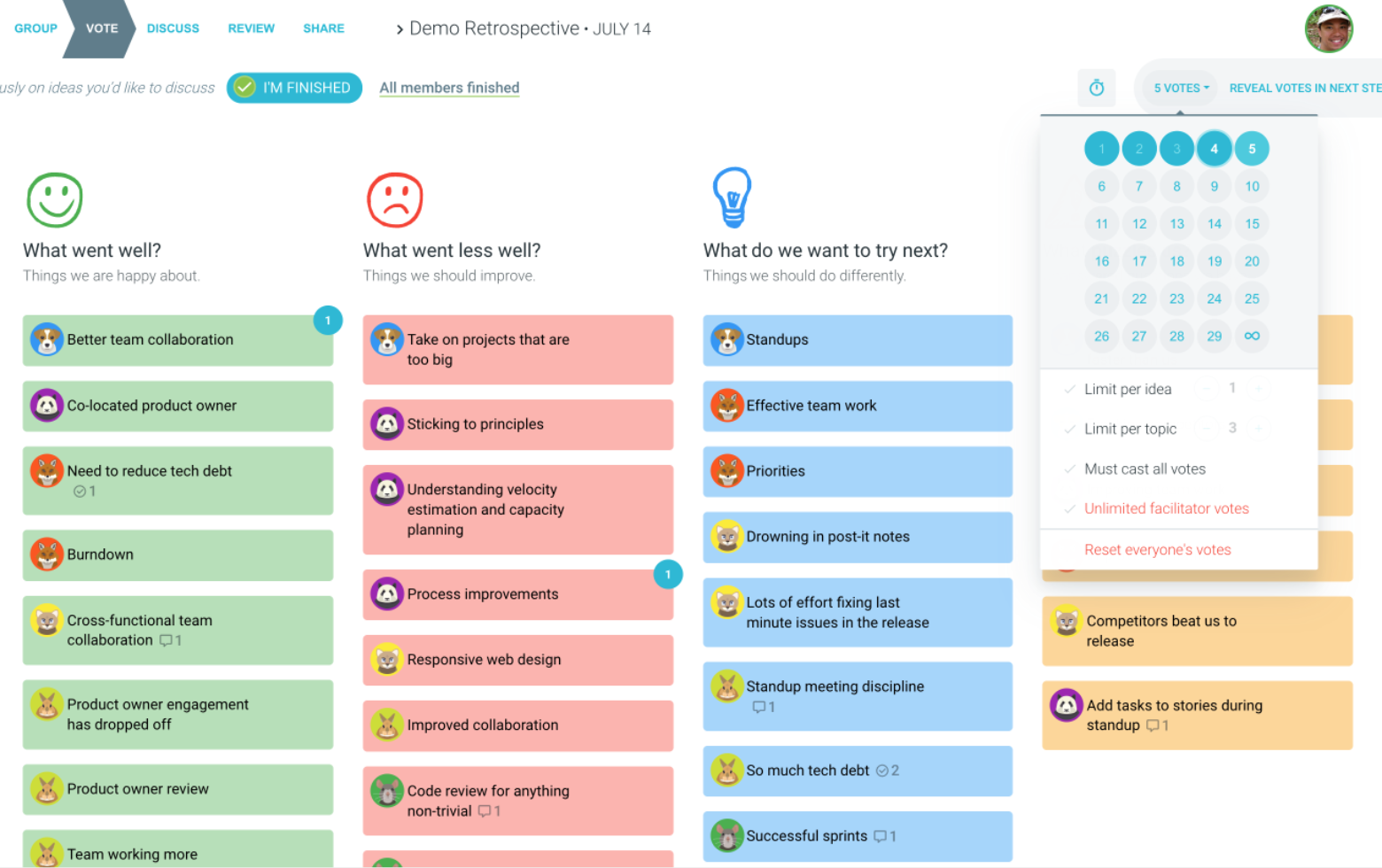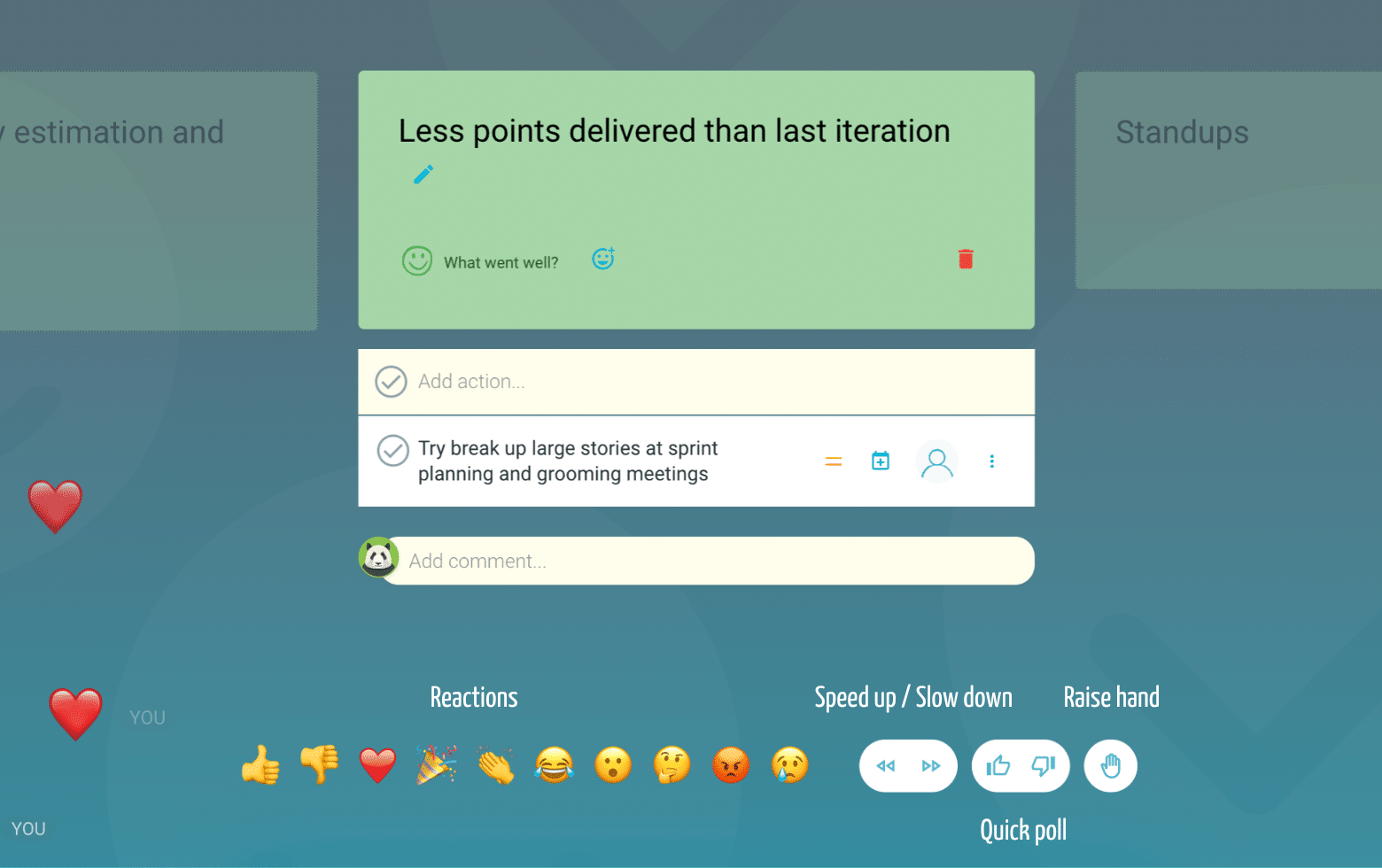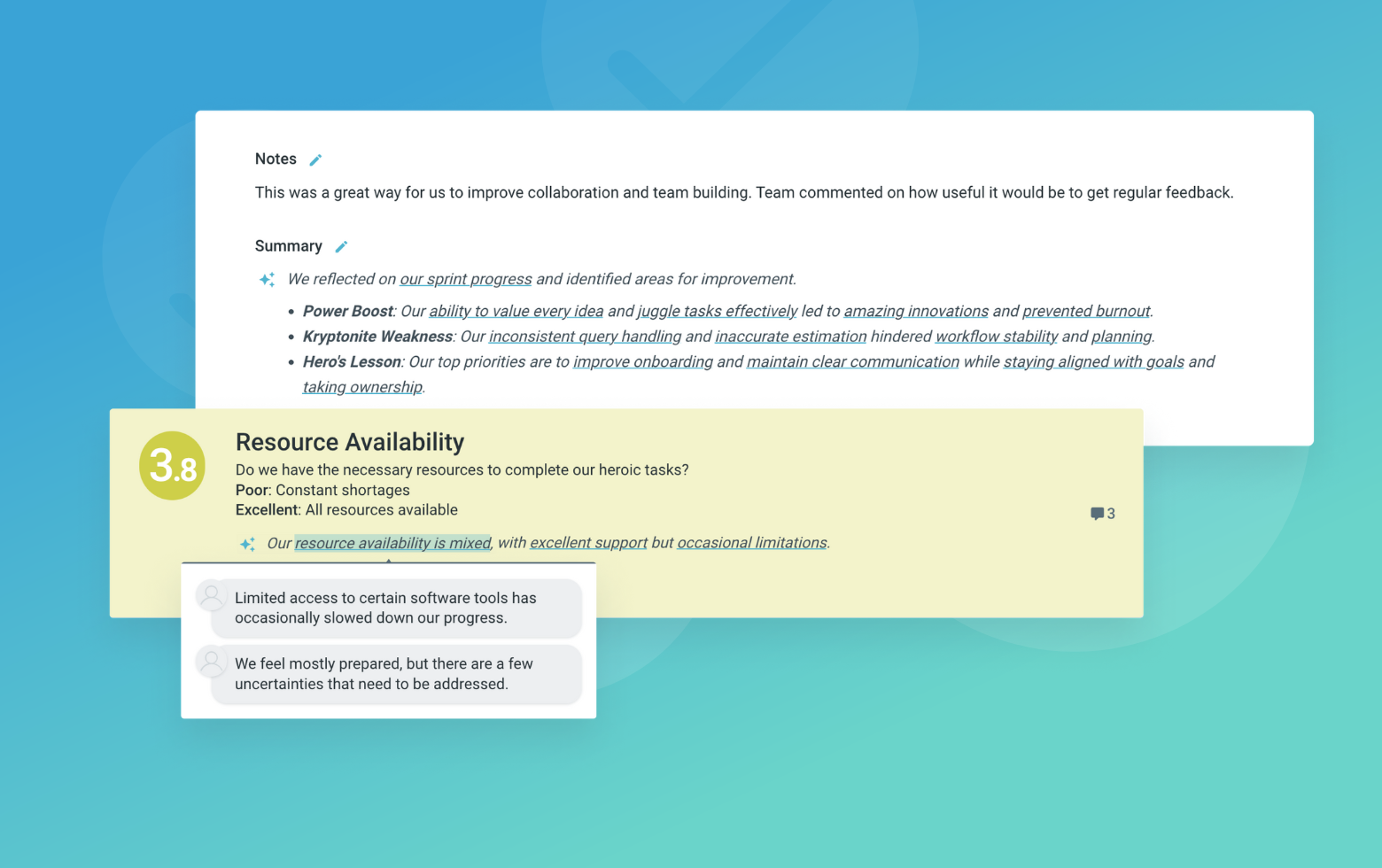What is a Sailboat retrospective?
Heard of the term “smooth sailing”? This agile retrospective technique turns your team into the crew of a sailboat travelling to its final destination: a sunny island. It uses this metaphor to help the people reflect on the last sprint, in order to determine the best way to navigate going forward.
Imagine that your team is working together aboard a sailboat heading on a journey to your final destination. Along the way, you are propelled forward by the wind. You can be slowed or stopped by the anchor. You will have to avoid icebergs, reefs or rocks, but you have your mind set on the sunny island where your team hopes to land and celebrate. The Sailboat retrospective takes this adventurous imagery and helps you to apply it to your last sprint.
Sailboat retrospective format
Before starting the Sailboat retrospective, ask the team to imagine themselves as the crew of the sailboat. Another way to think about it is that the Sailboat is the product, project or epic that they are working on. Now, ask them to consider the following.
The Goal
What is the final destination for the team? What is their goal or vision? This is where they are heading to and represents their version of success.
The Wind (or the sails)
What is pushing the team forward towards their vision? What is driving them towards the goal? It could be their own capability, support from champions, being well resourced or being motivated by a common goal.
The Anchor
What would slow the team down, or bring them to a complete stop? What would create drag and reduce velocity? It may be a dependency or policy. It could be a lack of process or one that is too complex. Some anchors may be necessary, and others need to be considered to see if they will be a constant drain on the team, making them less agile and achieving less progress.
The Rocks
What are the risks or potential pitfalls along the way? What does the team have to watch out for? There may be communication gaps, the response from competition or technical risk that could unhinge the team. Understanding what the risks are early can help the team think of ways to navigate around them or put signals in place as a warning as part of the next sprint.
The Sun
What is making the team feel positive? What are the good things that can come out of this? These may be things that they look forward to and may include customer feedback, usage or improving the robustness of their infrastructure.
Some other aspects that people can include into their Sailboat Retrospective template include Choppy Waves (Things that make them feel anxious) or Calm Waves (Things that can help them experience a state of flow).
This style of retrospective can be used when your team is having trouble completing a task. Having the ability to see what has been slowing you down and what you have achieved despite this, can be helpful in providing confidence when trying to complete a difficult task.
Suggested icebreaker questions for the Sailboat retrospective
- What is your ideal island holiday?
- Which would you rather have: a sailboat or a speedboat, and why?
- Who would you want to be your sole companion if you were stranded on an island?
- If your boat is sinking and you can only save one thing, would you rather save your gold or your pictures?
Retro Rehearsal
Invite your team to rehearse the retro referencing their life journey so far.
Then ask them:
- What has pushed them forward to reach their goal?
- What has slowed them down?
- What has made them feel better throughout the journey?
Ideas and tips for your Sailboat retrospective
- The Sailboat retrospective aims to reduce the focus on any one person. It treats the team as a team and the sailboat as the project. This is a good time to remind people that they are there to help and support each other and that the goal is to help everyone reach the final destination together. No one gets thrown overboard, and no one left behind!
- Aim for a few action items that come out of your agile retrospective that will help you course correct. While it’s good to dream and to ponder, it’s also important that the team walks away knowing that their sailboat is travelling at the right speed in the right direction, or that there is a course change that is needed.
- Fold up a ship and float it in a bowl in front of the team or camera to bring your retrospective to life!
- If you are a remote team, you can request each member to change their screen background to a place they hope to visit on their next trip.
- Utilise team health checks to measure and track your team’s happiness over time. The Team Health Check is a specialised self-evaluation tool for agile project teams that wish to improve their collaboration in order to achieve project objectives.
- Have fun looking back. Request input from the team about each retrospective to identify a structure or activity that people enjoy so that you may conduct them more frequently. People frequently learn more effectively when they are having fun or laughing while learning.
- Using a timer, you can Timebox discussions. This will keep the conversation on track and the retrospective on course.
- A good way to conduct the sailboat retro is to discuss ways to mitigate the identified risks and to prioritise the factors that are slowing you down. It should be clear what steps can be taken to fix, avoid, mitigate or eliminate the problem.
How to run a Sailboat retrospective in TeamRetro
Start Your Session in a Click
Log into TeamRetro and choose your template. Customise questions and the workflow to create your perfect retro for your team.
Create Your Team Easily – No Separate Accounts Needed
Brainstorm Individually – Free From Bias
Smart Grouping for Faster Insights
Fair, Flexible, and Fast Voting
Engage, React, and Capture Key Insights
Walk your team through ideas one by one with Presentation Mode. Stay in sync, spark real-time discussions, and capture feedback with comments, live reactions, and polls—all in one place.
Turn Ideas Into Action
Propose next steps with team buy-in, get AI-powered action suggestions, and keep everything in one place. Committed actions sync to your personal dashboard and integrate with your workflow tools—keeping you on track.
Save, Share, and Stay on Track
Get quick AI-powered summaries, add facilitator notes, and store retrospectives in your library for easy access. Schedule your next session and track published actions to keep your team accountable at the next retro.
Turn Team Data into Actionable Insights
Uncover trends, common themes, and key engagement metrics at a glance. Track sentiment shifts, analyze conversations, and monitor completed actions to drive continuous improvement.








